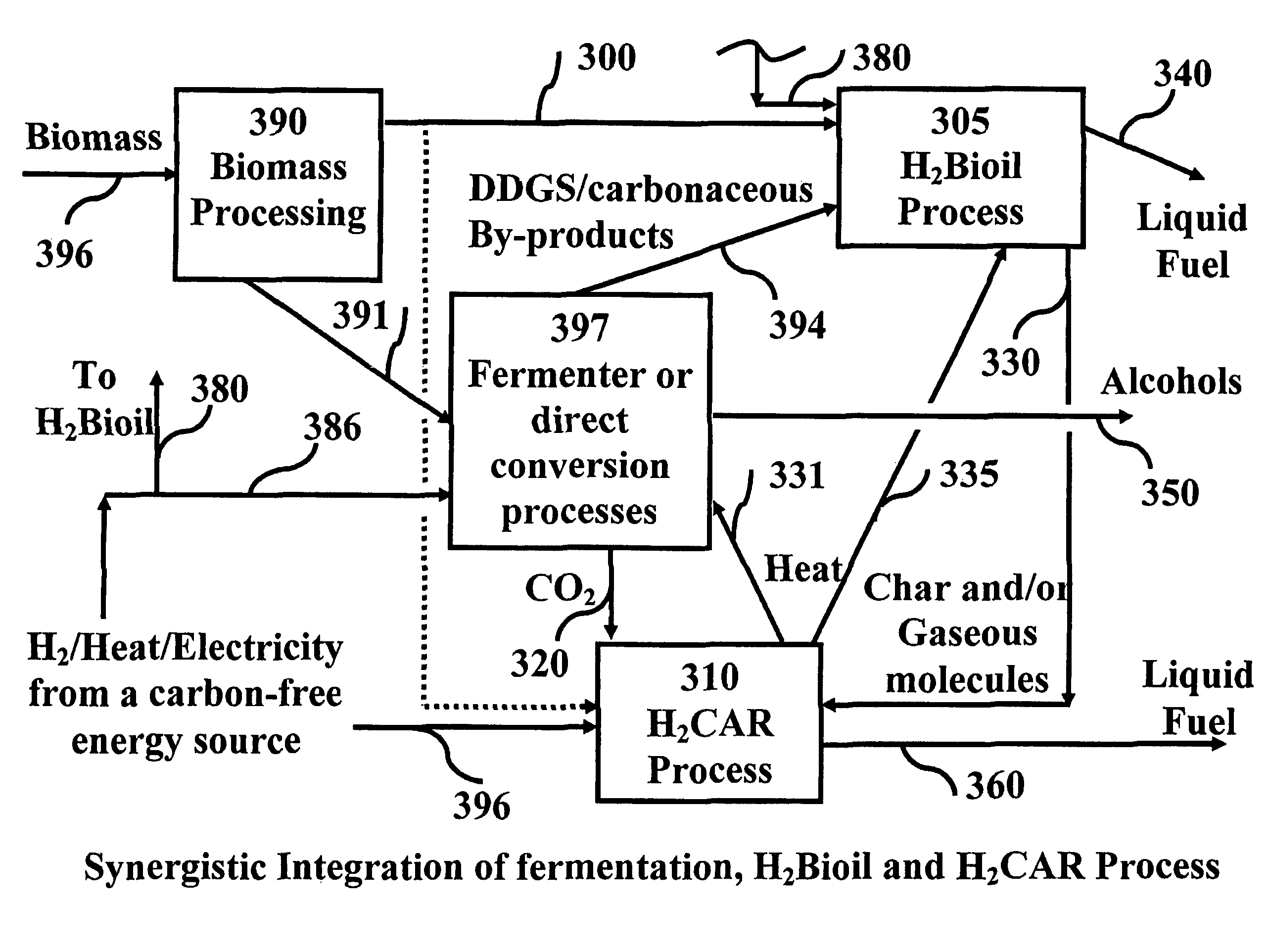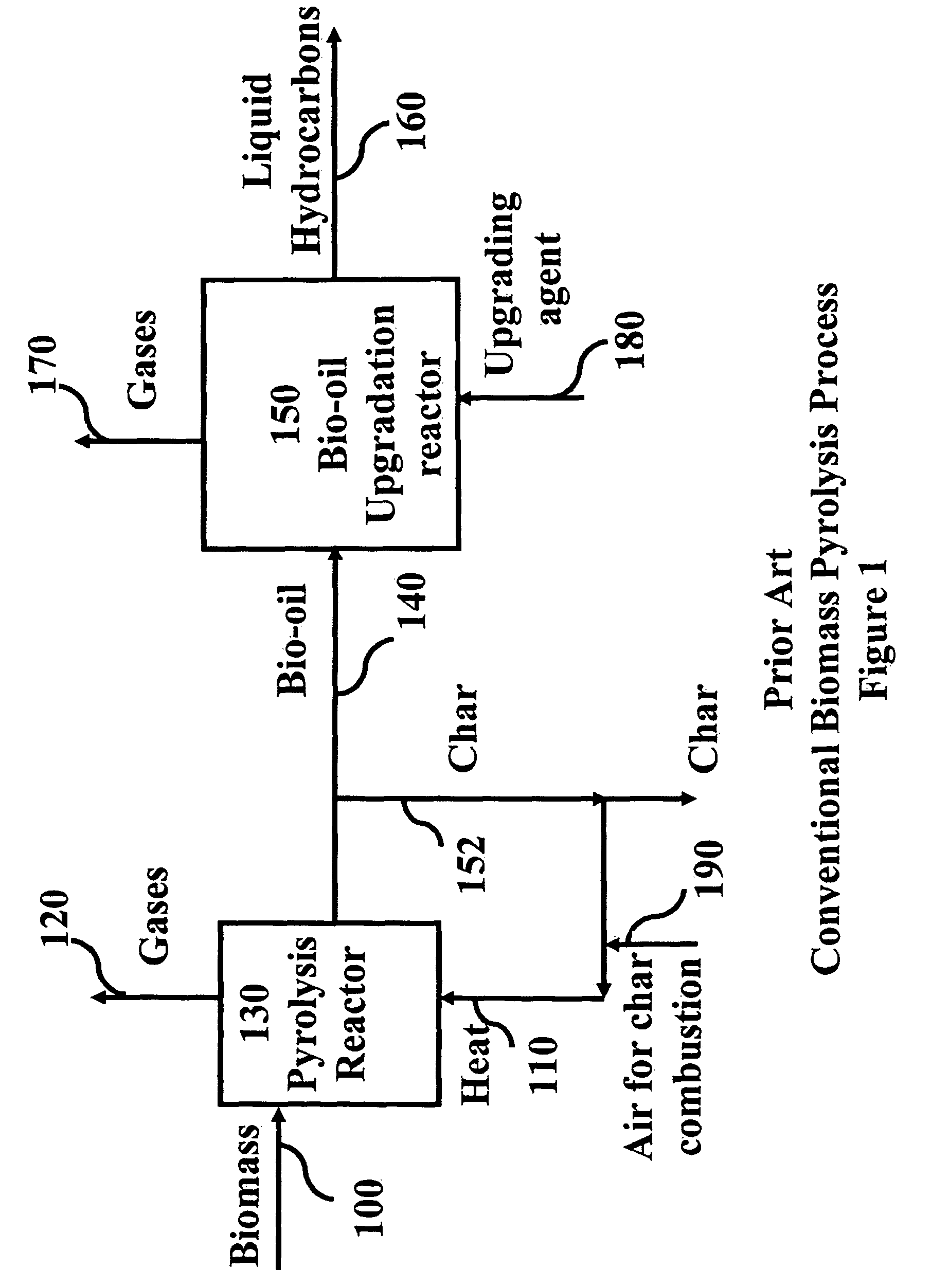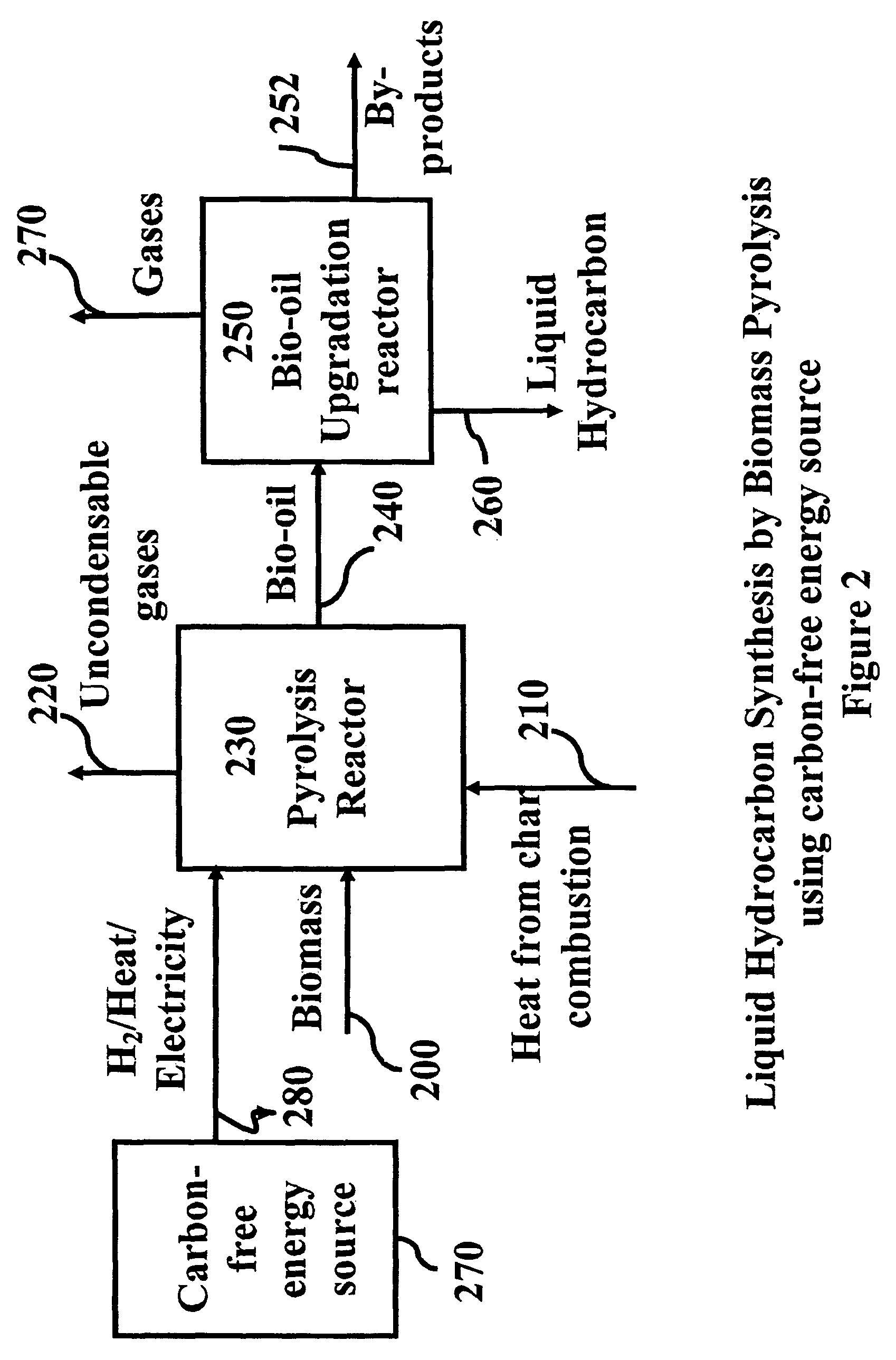Process for producing liquid hydrocarbon by pyrolysis of biomass in presence of hydrogen from a carbon-free energy source
a technology of carbon-free energy source and biomass, which is applied in the field of synthesis of liquid hydrocarbon, can solve the problems of not being suitable for replacement of diesel or gasoline, bio-oil formed directly from fast pyrolysis, and not being able to easily blend with petroleum products, etc., and achieves stable bio-oil and high energy content. , the effect of building on a relatively small scal
- Summary
- Abstract
- Description
- Claims
- Application Information
AI Technical Summary
Benefits of technology
Problems solved by technology
Method used
Image
Examples
example 1
[0042]To further illustrate the benefits of at least one embodiment of the present invention as compared to the prior art, the power utilization per m2 of land area is depicted using various processes based on a solar insolation of 1000 W / m2, which is a normalized value used for comparative purposes. The Annualized Energy Efficiency (AEE) based on the energy coming from Sun [4] and for a biomass growth rate of approximately 1.86 kg / m2 / yr is calculated to be approximately 0.52% (Biomass assumed here is corn grown in US, annual productivity of which is approximately 9296 kg / ha [3]. Assuming a harvest index of approximately 0.5 [14], net biomass growth rate becomes approximately 1.86 kg / m2 / yr). Based on approximately 1000 W / m2 available from the Sun, approximately 5.2 W / m2 is stored in the form of biomass. Hill et al. reported 6.39 MJ / l ethanol as the agricultural energy input required to obtain this corn growth rate which translates to approximately 0.2 W / m2 [3]. Accordingly, the net ...
example 2
[0044]In an embodiment in accordance with the present invention, the total incident solar power is split to grow biomass (approximately 979 W) and produce H2 by an electrolytic route (approximately 21 W). After accounting for approximately 15% efficiency of solar-thermal electric or PV and approximately 50.7% conversion efficiency of electricity to H2, approximately 1.6 W / m2 is available as H2 for utilization in the H2Bioil process. Similar efficiency for the hydropyrolysis are used in the H2Bioil process (approximately 82%) of FIG. 4 where the power utilization for the H2Bioil process is approximately 5.3 W / m2, which is much higher than the other processes. The approach of directly utilizing H2 from a carbon-free energy source increases the ‘Sun to Fuel’ power recovery as shown in FIG. 5. This illustrates a beneficial effect of injecting H2 from a carbon-free energy source during the H2Bioil process. It is worth noting that compared to the conventional pyrolysis process, the H2Bioi...
PUM
| Property | Measurement | Unit |
|---|---|---|
| temperature | aaaaa | aaaaa |
| temperature | aaaaa | aaaaa |
| energy density | aaaaa | aaaaa |
Abstract
Description
Claims
Application Information
 Login to View More
Login to View More - R&D
- Intellectual Property
- Life Sciences
- Materials
- Tech Scout
- Unparalleled Data Quality
- Higher Quality Content
- 60% Fewer Hallucinations
Browse by: Latest US Patents, China's latest patents, Technical Efficacy Thesaurus, Application Domain, Technology Topic, Popular Technical Reports.
© 2025 PatSnap. All rights reserved.Legal|Privacy policy|Modern Slavery Act Transparency Statement|Sitemap|About US| Contact US: help@patsnap.com



